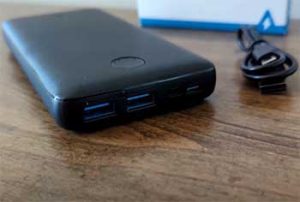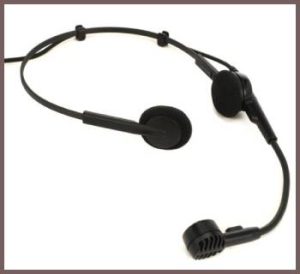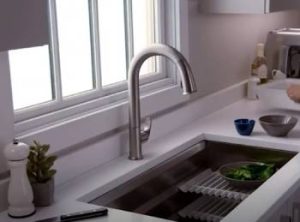It’s a beautiful Saturday morning, the sun is up, the birds are chirping, and the grass on your lawn is freshly mowed. Yet, there’s one lingering problem – the heaps of grass clippings and leaf debris scattered around.
The scenario leads us to a classic backyard dilemma: to choose a lawn sweeper or a lawn vacuum?
A Brief Comparison Table
Sure, here’s a comparison table to provide a quick overview of the differences between a lawn sweeper and a lawn vacuum:
| Lawn Sweeper | Lawn Vacuum | |
| Ease of use | Very easy to use | Moderate; could be heavy |
| Terrain | Best on flat surfaces | Works on all terrains |
| Type of debris | Light debris | All kinds of debris |
| Capacity | Lower | Higher |
| Operational cost | Lower; mostly manual | Higher; requires power |
| Eco-friendliness | Higher; manual operation | Lower; power usage |
| Physical effort | Less demanding | More demanding |
Remember, both tools have their strengths and weaknesses, and the choice between them depends on your specific needs and the characteristics of your lawn.
Lawn Sweeper: The Good, The Bad, and The Ugly
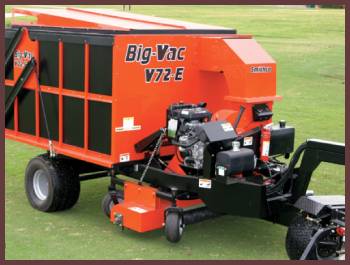
A lawn sweeper, also known as a yard sweeper, can be a game-changer for your lawn maintenance. Picture a stroller with large bristles underneath, a revolving mechanism that scoops up debris as you move along. That’s a lawn sweeper for you.
Pros of Using a Lawn Sweeper
First off, lawn sweepers are easy to use. They’re lightweight, don’t require any technical skills, and simply need you to push or pull (depending on the model) around your lawn. Plus, they’re quick, which means less time sweating and more time sipping your favorite beverage on the porch.
Secondly, lawn sweepers are super effective on flat and even surfaces. Got a lawn that would make a pool table green with envy? The lawn sweeper will work its magic seamlessly, picking up grass clippings, fallen leaves, twigs, and even pinecones!
Cons of Using a Lawn Sweeper
However, the grass isn’t always greener on the lawn sweeper’s side. The efficiency of lawn sweepers drops considerably on uneven or sloping surfaces. They might also struggle with heavier debris like acorns and large twigs.
The second downside is capacity. While it’s great that lawn sweepers pick up all sorts of debris, they tend to fill up fast. So, be prepared to empty it multiple times during your cleaning session.
Read More: About Pottery Barn Curtain Rods
Lawn Vacuum: More Than Just Sucking Up
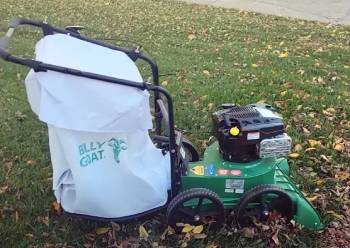
Now, let’s introduce the other contender: the lawn vacuum. As the name suggests, it’s like your indoor vacuum cleaner, but for the outdoors. It sucks up debris and collects it in an attached bag or bin.
Pros of Using a Lawn Vacuum
A major benefit of lawn vacuums is their versatility. They can handle almost any kind of debris, be it heavy, wet, or dry. This makes them ideal for areas with lots of trees that shed leaves, needles, acorns, or cones.
Lawn vacuums also have a larger capacity than lawn sweepers, reducing the number of times you need to empty the bin. Furthermore, some models come with built-in chippers or shredders, which help reduce the volume of debris, making disposal easier and more eco-friendly.
Cons of Using a Lawn Vacuum
Yet, the lawn vacuum isn’t perfect. They’re not as easy to maneuver as lawn sweepers due to their size and weight. This could be a drawback for those with larger lawns or people with physical limitations.
Additionally, most lawn vacuums are powered by electricity or gas, which means a higher operational cost compared to the manual lawn sweepers. Also, if you choose an electric model, you’ll have to deal with power cords, limiting your range and mobility.
The Deciding Factors: Understanding Your Needs
When weighing between a lawn sweeper and a lawn vacuum, consider the type of debris you deal with, the size of your lawn, and your physical ability to handle the equipment.
Frequently Asked Questions (FAQs)
Yes, yard sweepers work exceptionally well for picking up grass clippings on flat and even surfaces.
Absolutely, yard sweepers are designed to pick up grass clippings, leaves, and other light debris. However, their performance may vary depending on the type and amount of debris, as well as the terrain of your lawn.
Yes, leaf sweepers, another name for lawn sweepers, can efficiently pick up grass clippings along with other light debris like leaves and twigs.
A lawn sweeper is best used right after mowing your lawn when grass clippings and small debris are scattered around. It’s also beneficial during fall when leaves are dropping.
The fastest way to pick up grass clippings is to use mechanical assistance like a lawn sweeper or a lawn vacuum. They’re designed to expedite the process significantly compared to manual raking.
This depends on several factors. If the layer of clippings is thin, you can leave them, and they will decompose, providing nutrients to your lawn. However, if they’re thick and clumped, it’s better to rake or pick them up to prevent smothering your grass.
Read More: About Amerock Golden Champagne Vs. Champagne Bronze
The Final Cut
Ultimately, the choice between a lawn sweeper and a lawn vacuum depends on your specific needs and circumstances. Assess your lawn, the type and volume of debris you deal with, and your physical comfort in handling these tools. Remember, the goal is to keep your lawn clean and healthy while making the process enjoyable and efficient for you.
Whichever tool you choose, may it bring ease to your yard maintenance and add more beauty to your home’s outdoor landscape. Happy sweeping…or vacuuming!

